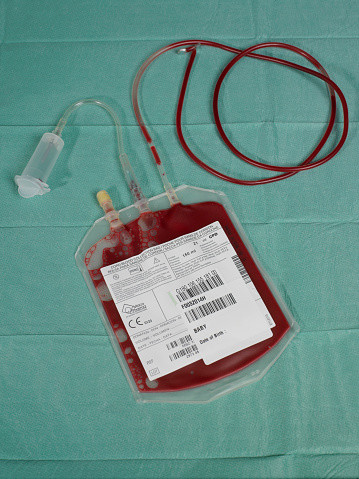 How to determine the child's blood type by parent? Photo: Getty
How to determine the child's blood type by parent? Photo: Getty
It's all about proteins
The method of blood group research, based onanalysis of parental data, can come in handy if there are controversial points about the paternity of the child. This information will help to calculate the probability of hemolytic disease of the newborn. A fatal disease occurs when the parent and child are incompatible with the group or Rh-factor. The subdivision of blood into groups depends on the presence or absence in the red blood cells of special proteins - agglutinogens. There are two types, which are usually labeled A and B. If there are no such proteins, then the blood group is called the first. The presence of type A agglutinogens indicates the second group, B - from the third. The presence of both types of proteins implies the fourth group. That is why in the medical documents blood groups are indicated as follows: - first - I (0); - the second - II (A); - the third - III (B); - the fourth - IV (AB). Rhesus factor - the protein-antigen contained in the erythrocytes. Its presence in the blood cells is marked as a positive Rh factor, absence - negative. Information on this antigen should be known to both parents in order to avoid Rhesus-conflict. Its risk increases if the pope has a rhesus with a plus sign, the mother - a negative, and the baby inherited the father's antigen.
How is the blood group passed to the baby?
Dependence of blood group inheritance can betrace. Both parents have I (0)? Their children with 100% probability will inherit the same. The heir of the parents with the second group will receive a similar result in 75 percent of the cases. But a quarter of kids have a chance to come into the world with I (0). At III (B), in both parents, three quarters of babies are born with the same group, and a fourth with the first. If mum and dad are carriers of both types of proteins IV (AB), all is more complicated. Only half of the children born to such parents inherit the composition of their blood. The rest have an equal chance to get II (A) or III (B). It is possible to reveal the regularity of the genetic transmission and for different blood groups in the parents. If the mother has the first group, and the father has a second or third (or vice versa), the baby will inherit one of them. The combination of my mother's I (0) and father's IV (AB) as a result always gives as II (A) or III (B) in the newborn. Neither the fourth nor the first group they can not be. Likewise, if the pope's I (0), and mom's IV (AB). When the baby is born to the parents with II (A) and IV (AB), he has a 50% chance of receiving the blood of the second group. But also the child may have III (B) or IV (AB). And if one of the parents is the bearer of II (A), and the second is of III (B), it is unrealistic to calculate the blood group of their offspring. Can be any option. It is interesting that a person with a fourth blood group, whoever he marries has never entered, will never have an heir with the first. The Rh factor is also genetically determined: - A couple with positive rhesus may have a crumb with both the presence of the antigen, and without it. - If the parents have this indicator with a minus sign, the baby will also have a similar one. - With different Rh factors, the infant will inherit one of the parental. When planning a large family, the young couple should take into account the inheritance of both the blood group and the Rh factor. In case of doubt in paternity or the need for blood transfusion, only theoretical calculation can not be taken into account. It is necessary to conduct a laboratory study. Analyzes are handed down by parents and children, the blood group is calculated as accurately as possible.









